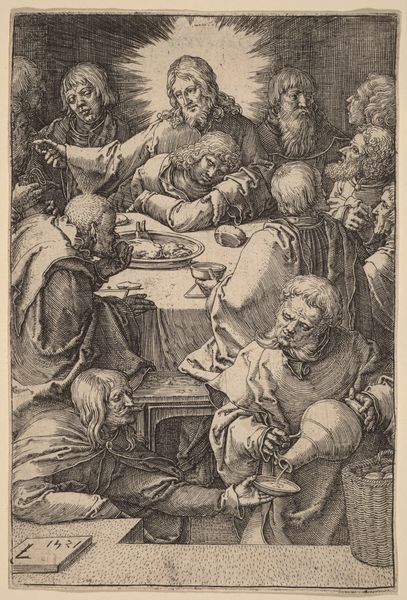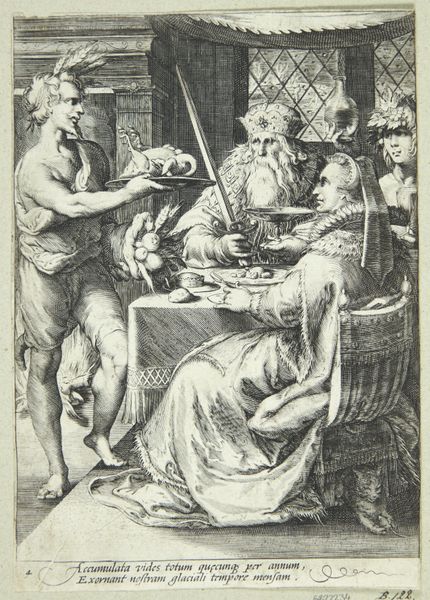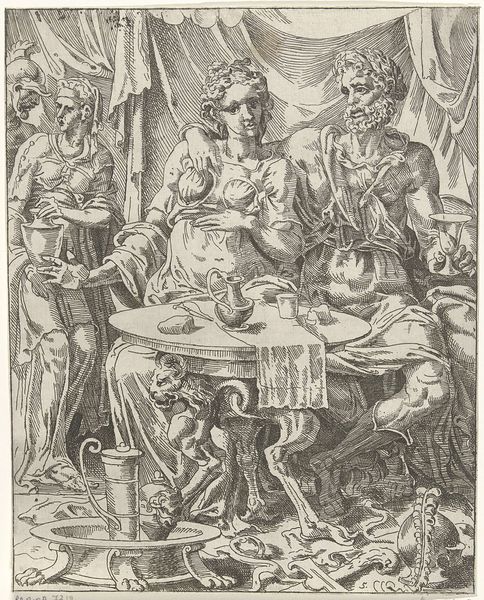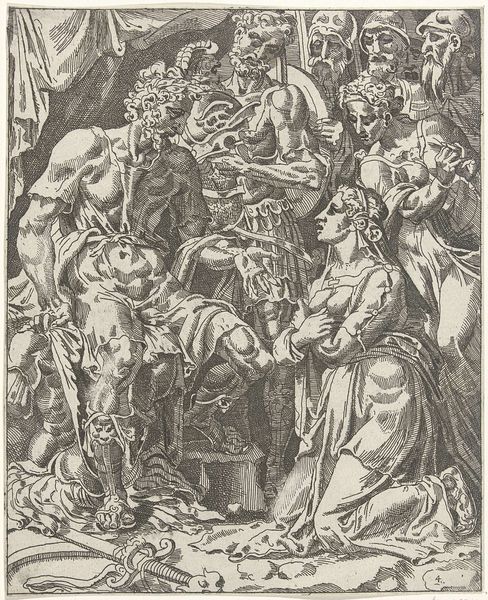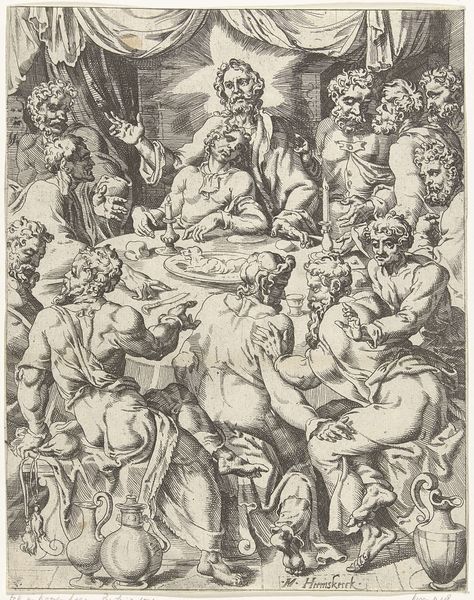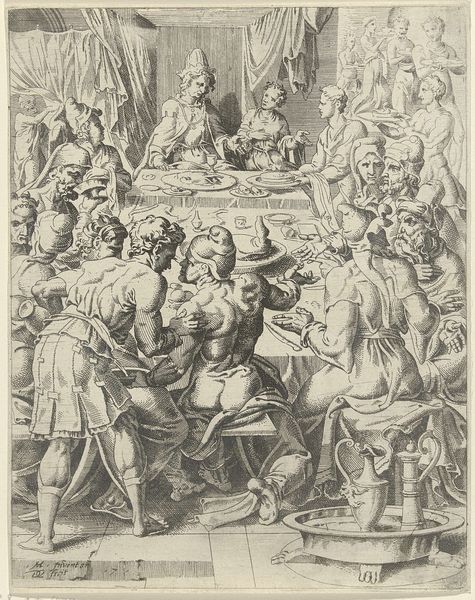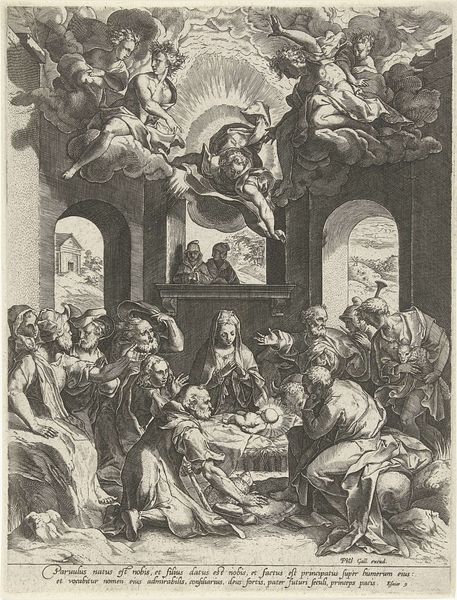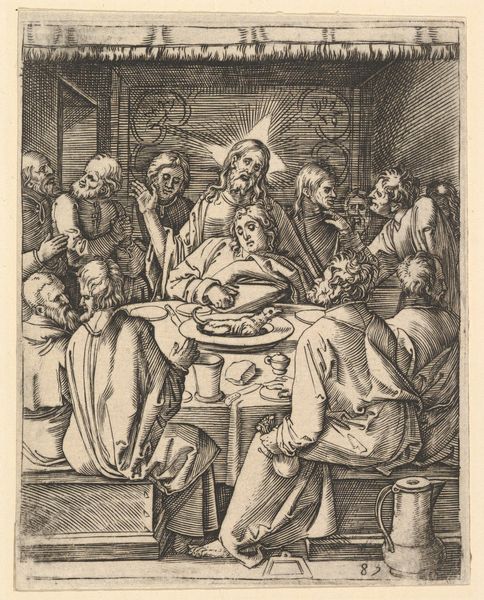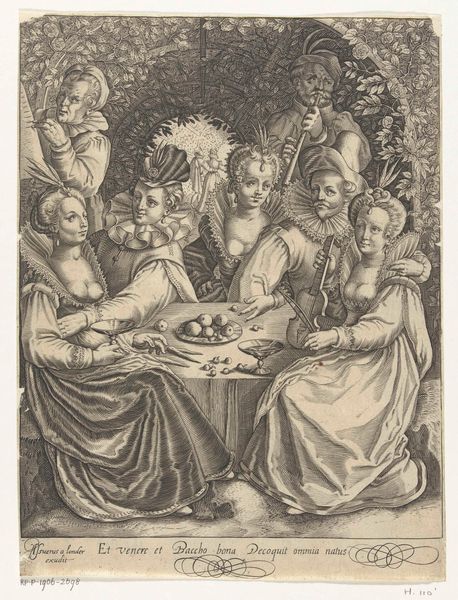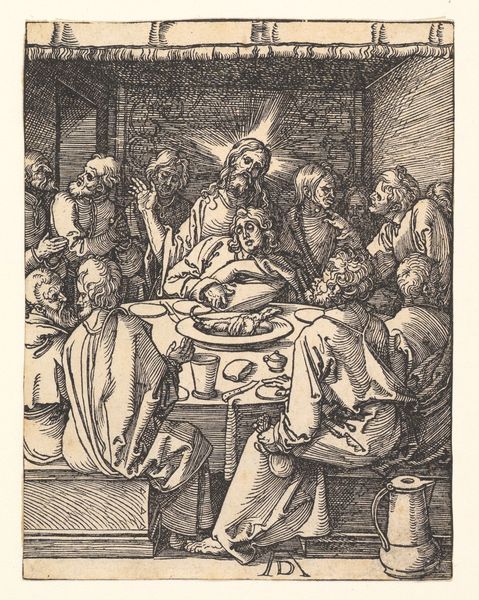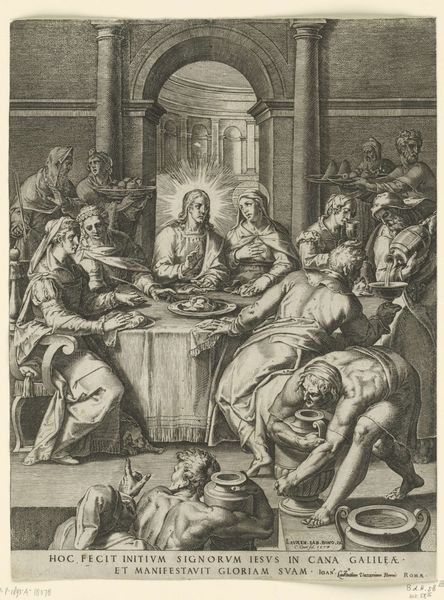
print, engraving
# print
#
figuration
#
11_renaissance
#
history-painting
#
northern-renaissance
#
engraving
Dimensions: width 199 mm, height 248 mm
Copyright: Rijks Museum: Open Domain
Curator: Here we have "Maria Magdalena wast de voeten van Christus," or Mary Magdalene Washing Christ's Feet, an engraving by Dirck Volckertsz Coornhert, dating back to 1548, currently held at the Rijksmuseum. Editor: My first impression is one of intense drama—the tightly packed figures around the table and the stark contrast between light and shadow really heighten the emotional weight of the scene. Curator: Absolutely, and if we delve into the historical context, we see the importance of religious narratives during the Renaissance period. This engraving likely served a didactic function, teaching moral lessons about repentance, forgiveness, and humility. Look at how Mary Magdalene's act is juxtaposed with the figures seated at the table. Editor: The figures at the table seem almost disapproving, rigid, and entirely uninterested, or even put off, by Mary Magdalene. Is it meant to be read as a commentary on societal views of women, particularly those who have transgressed against social norms? Curator: It is compelling to read the piece through that intersectional lens. Northern Renaissance art frequently engaged with these types of societal anxieties and spiritual themes, creating fertile ground for discourse on gender, redemption, and divine grace. Mary's role can be examined as a figure who subverts expectations, displaying profound humility. Editor: The composition too—Coornhert is positioning this narrative centrally, ensuring the viewer immediately locks onto this dramatic episode taking place as the table looms over her. The contrast he establishes feels pointed, emphasizing Mary's humility. Curator: And that is the crucial dynamic within Coornhert's "Maria Magdalena wast de voeten van Christus"— the visible tension between established authority, embodied by Christ and the surrounding figures, and radical humility displayed by Mary Magdalene. The scene also illustrates complex layers of societal expectations. Editor: It encourages reflection, it feels as if we're asked where we stand in this symbolic room between judgement and forgiveness. Curator: This engraving certainly gives insight into the world and worldview of 16th century Holland, and it challenges viewers to reflect on power dynamics even today. Editor: A piece that feels incredibly relevant when considering the continuing dialogues about identity, redemption, and challenging the established order.
Comments
No comments
Be the first to comment and join the conversation on the ultimate creative platform.
